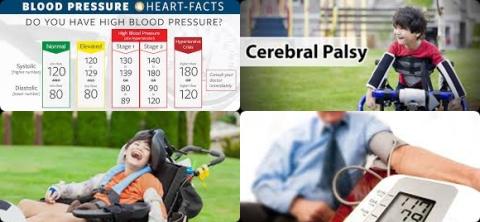
Objectives:
Is hypertension a risk factor in adults with cerebral palsy?
Study design:
This review article included data from 11 international cohort studies representing 444 adults with cerebral palsy [median (IQR) age of the sample was 29.0 (23.0-38.0), 51% men, 89% spastic type, Gross Motor Function Classification System levels I-V].
Results and conclusions:
The investigators found overall mean systolic blood pressure was 124.9 mmHg [95% CI = 121.7 to 128.1] and overall mean diastolic blood pressure was 79.9 mmHg [95% CI = 77.2 to 82.5].
The investigators found overall prevalence of hypertension was 28.7% [95% CI = 18.8 to 39.8%].
The investigators found subgroup analysis indicated higher blood pressure levels or higher prevalence of hypertension in adults with cerebral palsy above 40 years of age, men, those with spastic cerebral palsy or those who lived in Africa.
The investigators concluded that the findings in this review article underscore the importance of clinical screening for blood pressure in individuals with cerebral palsy beginning in young adulthood.
Original title:
Blood pressure in adults with cerebral palsy: a systematic review and meta-analysis of individual participant data by Noten S, van den Berg-Emons RJG, [...], Van Der Slot WMA.
Link:
https://pubmed.ncbi.nlm.nih.gov/34102658/
Additional information of El Mondo:
Find more information/studies on lowering blood pressure and cardiovascular disease right here.
Cerebral palsy (CP) is a group of disorders that affect a person's ability to move and maintain balance and posture. Cerebral palsy is the most common motor disability in children.